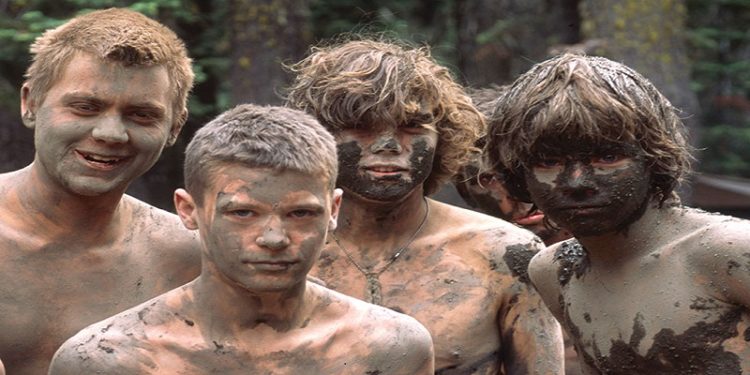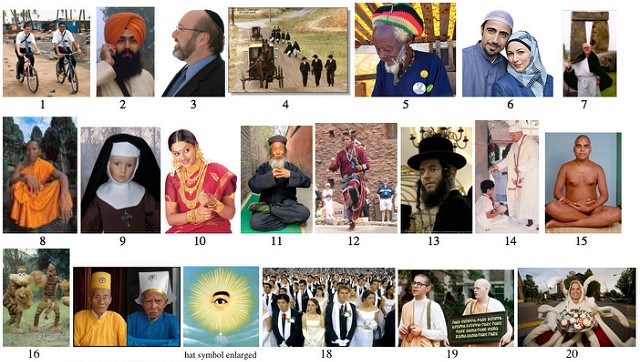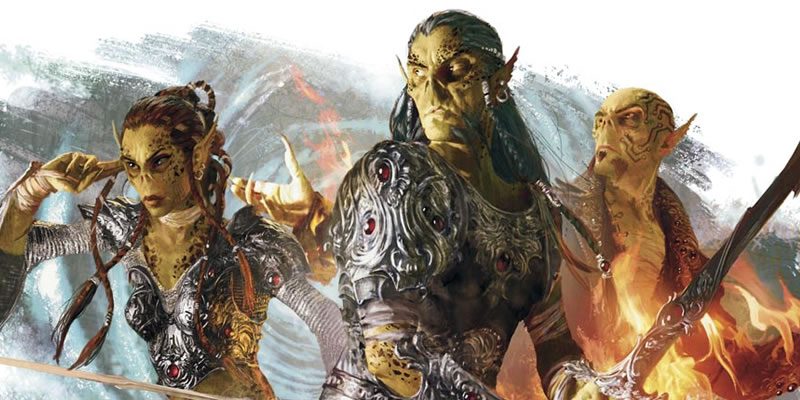Roleplaying Religions Right

(Author note: this is another article that has been bouncing around my head due to working at the Art Institute of Chicago.
Shameless Plug: Presently, through December 31st, 2018 there’s a special exhibit there called “James Webb Prayer” where over 200 belief systems [both Christian and non] are heard praying, for 9.5 hours of constant prayers. The prayers are various lengths anywhere from 2 minutes to over twenty, and when one prayer ends, another begins. The program is set up so that it randomizes the prayers that are played simultaneously, so that no groups of visitors will ever receive the same experience. These prayers, which are spoken normally, chanted, or sung, are unaccompanied by music. The prayers are often in many are in languages besides English. Participants are encouraged to walk without shoes on a prayer rug where they are praying to get close to speakers to hear individual prayers. Part of the experience is feeling the sound coming through the carpet.)
For the most part, religions and belief systems are things we experience as a mostly passive participant in their development in our daily lives. Many of us are indoctrinated into a religion or belief system from an early age and unless we take the time to sit down and question what we believe or have an opportunity to take a “comparative religions” class, we stick with that selfsame beliefs. The reason for this may be as simple as “I grew up with this, therefore I am comfortable with it” to as complex as “I have done the research, the soul searching, as well as the thought and behavioral modifications this religion requires of its adherents and I feel that it is the truth.”
But what is a religion? Let’s use the following definition:
Religion may be defined as a cultural system of designated behaviors and practices, worldviews, texts, sanctified places, prophecies, ethics, or organizations, that relates humanity to supernatural, transcendental, or spiritual elements. They may or may not contain various elements ranging from the divine, sacred things, faith, a supernatural being or supernatural beings or transcendence. Religious practices may include rituals, sermons, commemoration or veneration (of deities), sacrifices, festivals, feasts, trances, initiations, funerary and matrimonial services, meditation, prayer, music, art, dance, public service, or other aspects of human culture. Religions have sacred histories and narratives, which may be preserved in sacred scriptures, and symbols and holy places, that aim mostly to give a meaning to life. Religions may contain symbolic stories, which are sometimes said by followers to be true, that have the side purpose of explaining the origin of life, the universe, and other things. Traditionally, faith, in addition to reason, has been considered a source of religious beliefs.
We’ll discuss agnosticism/ atheism, rituals, costumes, and rites of passage in this article.
A note on atheism and agnosticism in tabletop RPGs
Even in a world where the gods are active and obvious in many aspects of the world around them, characters can still be atheists or agnostics. This could be simply because they say the gods are simply mortals with much greater powers than they, which is an idea that goes back to the RPG maxim “if it has stats, it can be killed.” Another idea why this could be is because the characters have been indoctrinated into a group that says that the gods are stealing power from an unknown source and are, in fact, frauds for claiming to be gods. At the GM/ DM’s purview, this lack of belief, whatever its source can help insulate the character from those wielding divine power… but also may prevent beneficial healing from such sources as well.
Rituals
Rituals are a sequence of activities involving gestures, words, and objects, performed in a sequestered place, and performed according to set sequence. Some rituals may necessitate the observers wearing special clothing (costumes) and / or jewelry. Some real-world examples of rituals are:
- worship rites and sacraments of organized religions and cults, including (but not limited to) confession, atonement, and purification rites; recitation of fixed texts; marriage and funerals; performances of music, songs or dances; manipulation of certain objects; use of special clothing; consumption of special food, drink, or drugs, and more
- Worship rites can be as simple or as complex as you want in your game. Having said this taking a cue from real world religions helps.
- Monk worship in your game may look like a Buddhist worship, incorporating guru and yantra yogas, and the fighting discipline of the Shaolin monks.
- Worship of deities may look much like what might be experienced in a church or synagogue today, complete with appropriate readings, sermons, songs, and offerings. Being that this is a fantasy setting, there may be healings, miraculous powers shown and the like.
- Because the deities (supposedly) gain their powers from worship, a potential complication in the games is that one god could decrease in power, while another increases due to losses or gains of worshipers. Because of this, worship services may be designed to attract followers, as what happened in the plot of Sister Act.
- Marriages should reflect the god(s) in question. The marriage ceremony of a god of beauty and nature should look vastly different than the marriage ceremony of a god of theft and avarice. These both should look different than a marriage ceremony for a god of water and ocean life.
- Funerals, on the other hand, should be a racially recognized thing, separate from whatever religion(s) they typically follow.
- Some racial examples
- Elven services by and large should be held outside. The time of day may signify certain types of ceremonies.
- Orcish services may be held amid battle, with them singing the destruction of their enemies.
- Gnomish services may be filled with practical jokes and illusions for the amusement of the worshipers.
- Services for dragons would have to be in a very large area, maybe in an area larger than a stadium because of their size. Such a worship service would be almost impossible to miss due to the presence of a large number of dragons.
Costumes

The costumes or clothing and jewelry characters wear are often indicative of their religion(s)/ beliefs. In the real world, Buddhist monks are often seen in bright orange robes, and will sometimes have wooden bead necklaces and/ or bracelets. In many branches of Christianity, the pastor or priest leading the service will often wear robes (sometimes called “vestments”) and/ or a cross. In tabletop RPGs, the typical costume is typically some sort of a robe and a holy symbol… however this doesn’t necessarily need to be the case. Here’s some alternative ideas:
- Elves may wear their traditional garb: things like “cloaks of (and boots) Elvenkind,” elvish armor, and weapons. Having said this, for certain ceremonies, they may choose to wear less, such as only some ceremonial paint and a loincloth, or even nothing at all to be closer to the earth.
- Dwarven clerics might wear clothing that reminds onlookers of their craftmanship with stone, gems, arms and armor. Conversely, it might evoke feelings of strength and stability.
- Orcish priests could be armed to the teeth and wear battle armor that evokes fear in their enemies.
- Keep in mind for races that have wings, any sort of vestments or outfits will need to accommodate them.
- Also keep in mind that the holy symbols, while typically just that, can be incorporated into other objects. For instance, a cross may contain a hidden dagger and a medallion necklace in the shape of a firefly might contain a small vial of oil for ceremonies.
Rites of passage.
Rites of passage are celebrations of the passage which occurs when an individual leaves one group to enter another. It typically involves a significant change of status in society. Some real-world examples:
- When Jewish boys become 13 years old, they become accountable for their actions as an adult and become a bar mitzvah. Girl becomes bat mitzvah at the age of 12 or 13 depending on which sect of Judaism one follows.
- In many christian communities, a right of passage called “confirmation” is held as a form of indoctrination into the church and its beliefs whereby the youth undergoing it needs to do such things as memorize scripture passages, have an understanding of the tenants of the belief, talk with the pastor or priest before they are allowed to have the first communion.
- A Quinceañera, for example, is celebrated in the Mexican culture when a girl turns fifteen. It is a social introduction and dates to the Aztec and Mayan times.
- In Amish tradition, Rumspringa marks the time when youth turn 16 and are finally able to enjoy unsupervised weekends away from family where they are encouraged to enjoy whatever worldly pleasures they like, to be able to see and experience the world beyond their culture and upbringing. Returning to their community and way of life thus is entirely their choice. Those who return are then baptized and become committed members of the Amish church and community, marking the end of Rumspringa.
- A Confucian-style coming of age ceremonies Ji Li (for girls) and Guan Li (for boys). The ceremonies typically honor youth who have turned 20, and provide a fun opportunity to wear traditional dress, hair buns, attaching hair pins, and paying tribute to Huangdi, a Chinese ancestor.
- In the Brazilian Amazon, young boys belonging to the indigenous Sateré-Mawé tribe mark their coming of age when they turn 13 in a Bullet and Ant Initiation in which the ants are sedated by a leader who submerges them in an herbal solution, and then woven into gloves with the stingers pointed inwards. When the ants awake, they’re angrier than ever. Each boy has to wear the gloves for ten minutes. Enduring the pain demonstrates the boys’ readiness for manhood — so few cry out as doing so would demonstrate weakness.
- What types of coming of age might you be able to create for your game? Think about the following ideas for your game based on race or class:
- Elves might have something akin to Native American vision quests to see what their lot in life is to be by communicating with the heart of the forest. This idea might need to be tweaked in settings where there isn’t lush greenery around to have the vision quest happen in a sweat lodge.
- Dwarves may be taken somewhere underground, blindfolded and told to make their way back to their home. Failure to be able to do so results in shame brought upon the unfortunate dwarf.
- Dragons’ rite of passage might entail visiting the Council of Wyrms. Check out this link for a homebrew version for 5e. Note: you’ll need to view the site on Google Chrome.
- Spell casters might research and cast their own custom spell. Whether it works or not is up to DM purview.
- Priests might have a ceremony where they to attempt to contact their god to be given special favor. Similarly, warlocks might have a ceremony to initiate the pact with whatever’s giving them powers.
- Bards might have a small group of their friends and relatives present when they announce to the world their intentions to become a bard.
- A classic trope of RPG video games is to have the hero do some low-level monster clearing and / or “fetch” quests which could act as a type of “coming of age” in your game.
- Similar to the idea of priests and nuns in real life, druids may have a commitment ceremony to the land(s) they are protecting.
- Rogues might get challenged to steal a difficult to obtain item to prove their skill and dedicate it to the god of thieves.
There are quite a few details that go into religions and belief systems, and this article only scratches the surface of the possibilities out there. Look out for part 2 soon!



